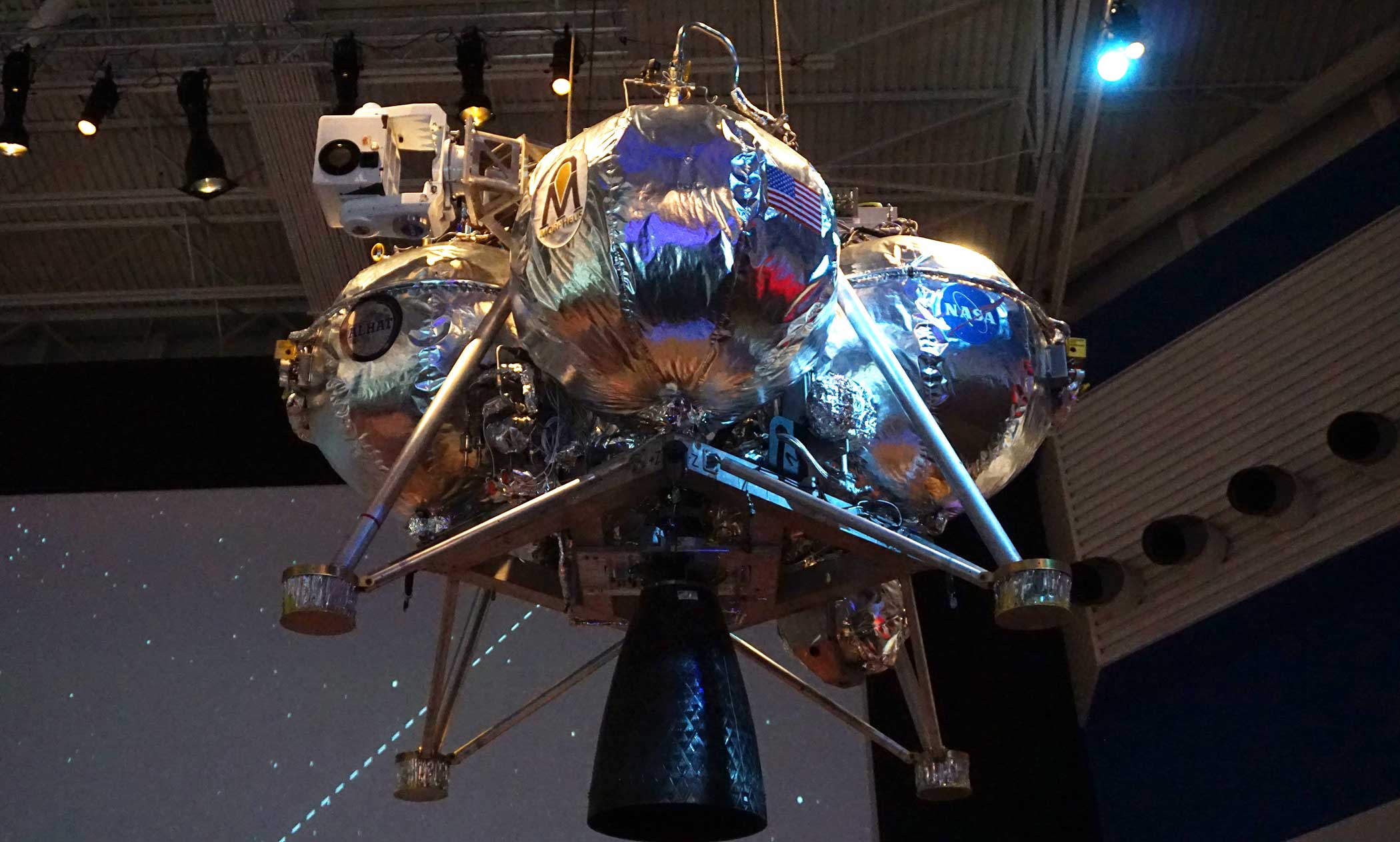
Space Center Houston soars ‘Above and Beyond’ the history of NASA with new additions
Space Center Houston’s Mission Mars exhibit received a new addition June 20. The Morpheus lander, which now hangs in the Mission Mars exhibit, was created in 2010 at the nearby Johnson Space Center in order to create a lander capable of a vertical take-off and landing.

The Mission Mars exhibit opened in January 2017. Mission Mars explains to visitors why NASA wants to go to Mars, which technologies and supplies will be needed, and some of the challenges humans will face by living on the red planet.
The autonomous robotic lander was worked on by a team of full-time staff and students, among other collaborators. The craft was tested successfully until the end of 2014 when there were no longer any funds to support further testing of the craft.
Morpheus successfully tested the Advanced Landing Hazard Avoidance Technology (ALHAT), which is one of the many important tools humans will need to safely travel past low Earth orbit, which has never been done before.
The ALHAT system uses a combination of different sensors and an artificially intelligent computer to assess hazards such as boulders and rocks when landing on the surface of a planet outside of Earth’s orbit.
“We tell the history of NASA here at Space Center Houston, but we wanted to tell the plans of the future here as well,” said Paul Spana, exhibits director and space historian at Space Center Houston. “This idea is what created the Mission Mars exhibit.”
The Mission Mars exhibit also seeks to accomplish Spana’s vision of “educating and inspiring people to work in space exploration,” with various interactive activities and artifacts which demonstrate the challenges and benefits of space exploration.
In April, Space Center Houston opened its summer exhibit, “Above and Beyond.” The exhibit is sponsored by Boeing and focuses mostly on the science of flight.
The exhibit houses different experiences, including one where visitors create their own flying vehicle and then test it in a flight simulation game. The game then provides the visitor with feedback in order to help them better understand the effects of these different parts on their personalized aircraft.
“Above and Beyond” has more interactive elements, as guests follow a migrating bird by flapping and holding their arms outward while a motion sensor detects their movements. The game then corrects the visitor’s movements in real time on screen to help them better understand wing movement in birds and how it helps them to move in all directions as they fly.
“Interaction is one of the most important aspects of these exhibits. I like to make sure there’s a good mixture of things to look at and things to do,” Spana said.
“Above and Beyond” houses artifacts such as a prototype jetpack, miniature models of rockets humans will use to reach deep space and even an opportunity to stand in a model space elevator and view an animation of what the ride to orbit and back to the surface might look like.
“The 501(c)(3) nonprofit Manned Space Flight Education Foundation has Space Center Houston as the cornerstone of its mission to inspire all generations through the wonders of space exploration,” said Meridyth Moore, public relations specialist for Space Center Houston.
Space Center Houston offers various exhibits, shows, camps, events and tours. The Space Center’s newest exhibits and additions bring new pieces of space exploration history to the public in order to help visitors understand the history and future of space exploration, travel, and eventual colonization.
